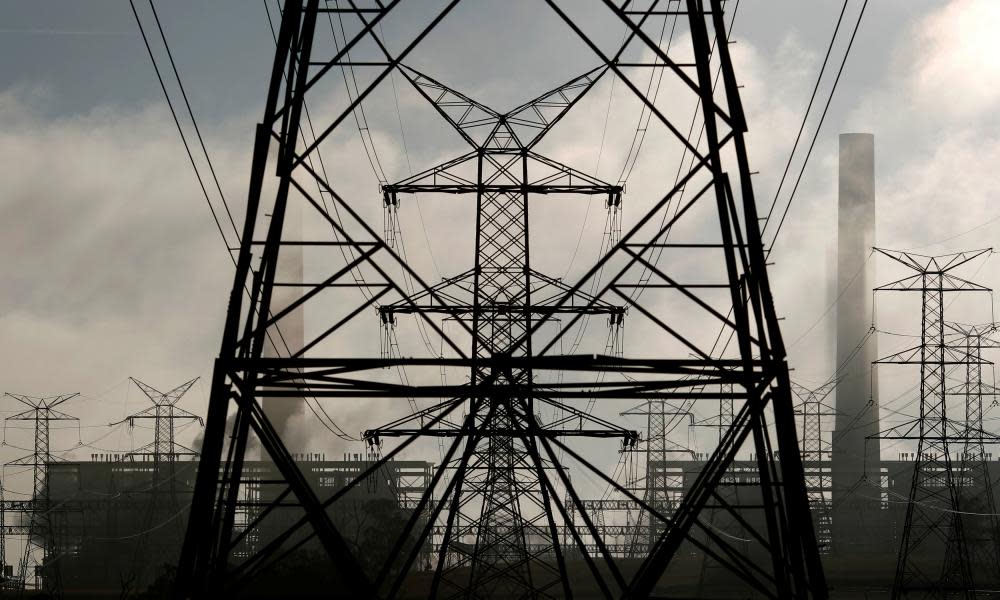The Coalition's 'big stick' was all about coal – and a big waste of energy

The Coalition’s “big stick” energy policy last week turned out to be nothing more than a twig. This latest, in a string of energy policy failures, demonstrates the Liberal party’s chronic inability to modernise our ageing, polluting and inefficient power system.
On Thursday, the Coalition government pulled its big stick legislation after the Greens moved an amendment, supported by the Independents and the ALP, to ban any taxpayer money going to coal. This exposes Scott Morrison’s true motives – he and his party love coal a whole lot more than they hate big power companies.
This bill was never about reducing electricity prices; it was designed to firstly make the Morrison government look like it was doing something and secondly, to keep old coal clunkers like Liddell running for longer, no matter the cost.
So where did the big stick come from?
The federal government started 2019 with two remaining energy policies - the Prohibiting Energy Market Misconduct bill and Underwriting New Generation Investments program. Both are bastardisations of recommendations made by the ACCC in July last year on how to lower electricity prices. However, any resemblance to any original ACCC recommendations, living or dead, are purely coincidental.
The federal energy minister, Angus Taylor, took the ACCC’s sound recommendation to limit companies with 20% or more market share from acquiring more generation capacity and turned it into a policy to continue the federal government’s war on AGL.
Not only do Australians currently hate the big banks, they also hate big energy companies. In fact, public support for energy companies is lower than for the banks. Needing to be seen as against something the public hates and having opposed the banking royal commission 26 times, the Coalition government looked around for another option. They unsurprisingly latched onto the energy companies.
However, instead of holding up one of numerous examples of energy companies price gouging as terrible behaviour, the government instead started a very public fight with AGL about its intention of closing Liddell coal power station.
Liddell is Australia’s oldest operating coal power station; it has been reported to have a number of problems, is cooled by a lake that is now home to brain-eating amoebas and was riddled with asbestos. AGL announced seven years ahead of time that it intended to close Liddell when it reached 50 years old in 2022. Now, AGL is no angel, but on this front it was doing the right thing. While the owners of Hazelwood coal-power plant gave their workers a mere five months to prepare, AGL has given seven years – four years more than the Finkel review proposed should be required.
However, instead of being congratulated, they were made the brunt of a massive public campaign by the Coalition government, trying to force them to invest over $920 million to keep the clunker open for an additional five years. This is despite the fact that AGL’s alternative plan would cost consumers $23/MWh less and a clean energy alternative modelled by UTS would cost even less.
It’s hard to take seriously the idea that the Coalition – the party of big business – really wanted to force divestitures of energy companies to stop them price gouging. Indeed, over the last few months Coalition backbenchers have forced changes to the big stick legislation as it “offends core liberal values.”
Rather this policy is a coal play. Just as the underwriting program is designed to support new or existing coal power stations, the big stick is set up to force companies such as AGL to divest their coal assets and sell them on to other sources, so that the age of coal (and thus worsening climate change) will continue.
This policy is just another example of this government playing politics with Australia’s energy future. Australia’s electricity system has real issues with the concentration and abuse of market power, and one of the worst culprits is the energy company owned by the federal government – Snowy Hydro, which last year made more money from retailing electricity than AGL.
If the government was serious about addressing market power and lowering power bills it would direct Snowy Hydro to lower its wholesale prices, as the Queensland government did. It would also work to develop a comprehensive electricity sector reform strategy, rather than trying to ram through a policy in time for an election. Thankfully the Greens, ALP and Independents have saved the Coalition from themselves, temporarily at least.
After a succession of failures to integrate the need to lower climate pollution while maintaining system reliability – the renewable energy target was cut back because it was too successful; both the Neg and the clean energy target recommended by the chief scientist were abandoned – this government has abandoned any attempt and is actively taking us in the opposite direction. And with electricity prices rising to record highs on their watch, this government no longer has any credibility on the cost of living argument either.
In the end, this comes down to the Coalition’s Neanderthal love of (little black) rocks and sticks. However, to fix our broken energy system we need tools a bit more sophisticated than a big stick and, for the sake of the climate, we need to move away from burning rocks.
Nicky Ison is the founding director of the Community Power Agency and research associate at the Institute for Sustainable Futures at the University of Technology Sydney.

 Yahoo News
Yahoo News 
